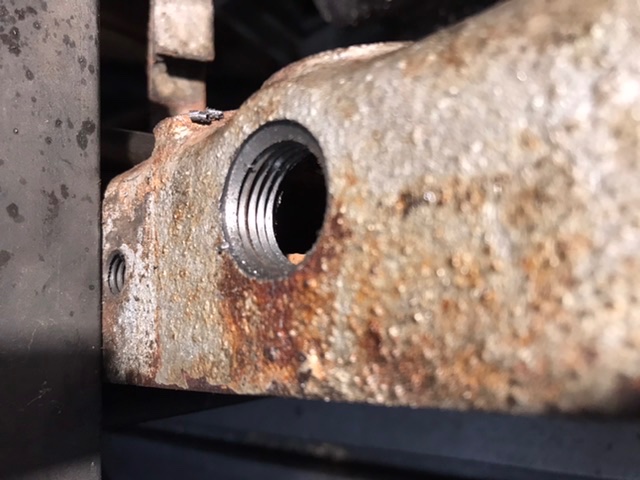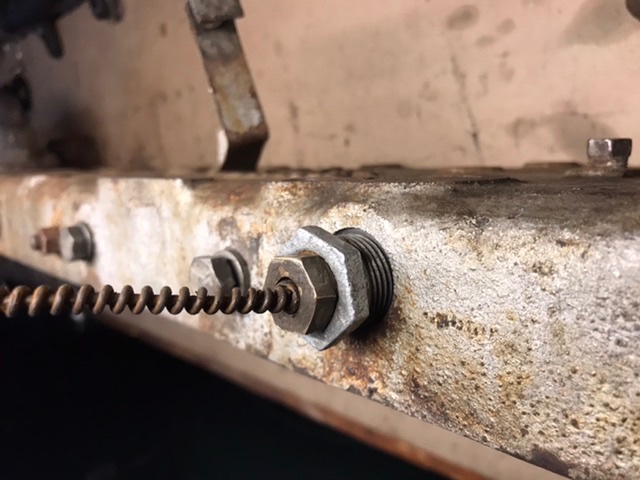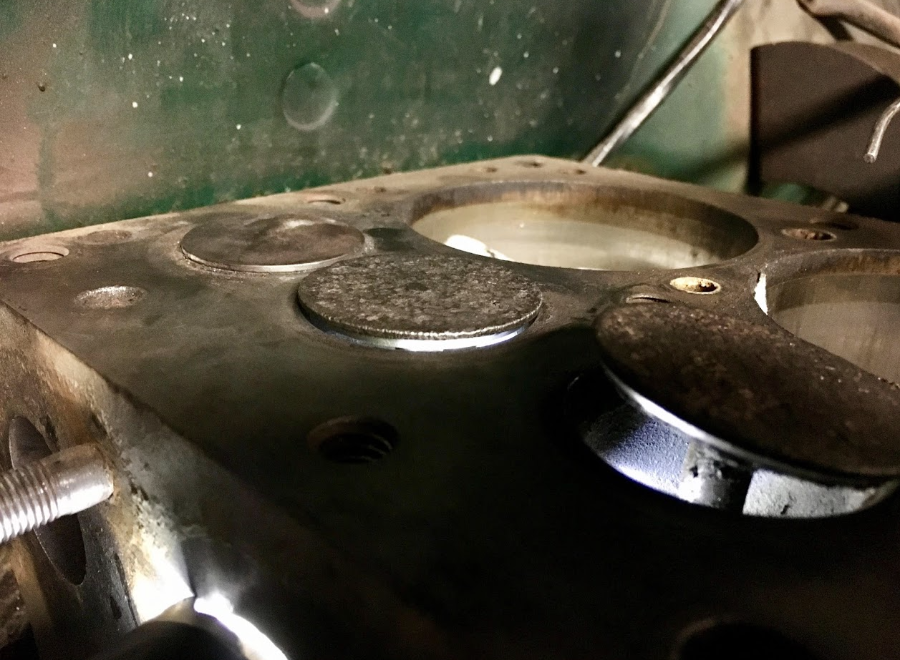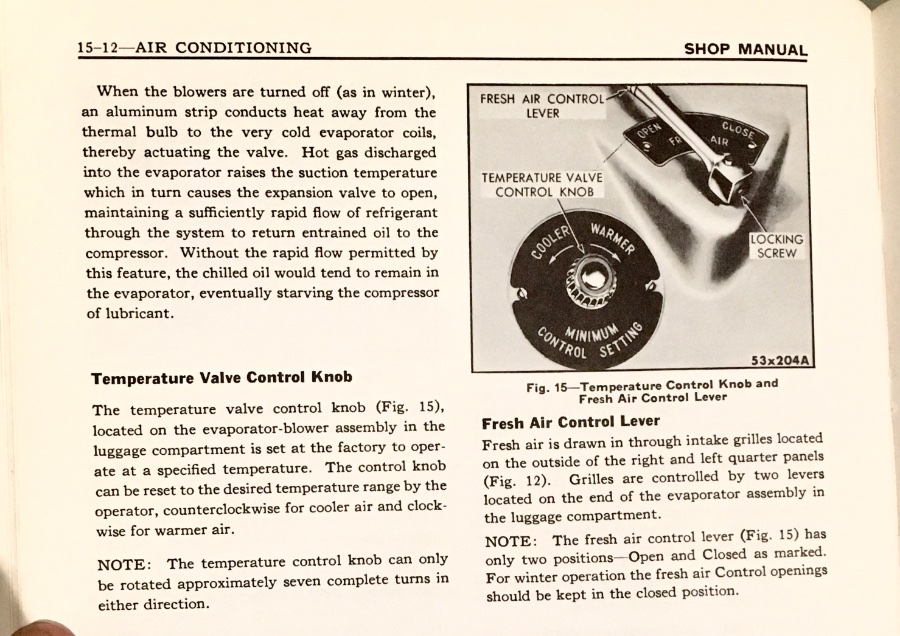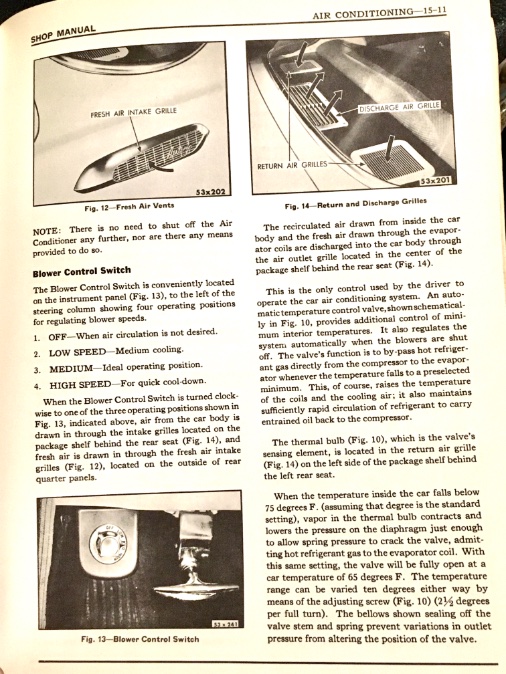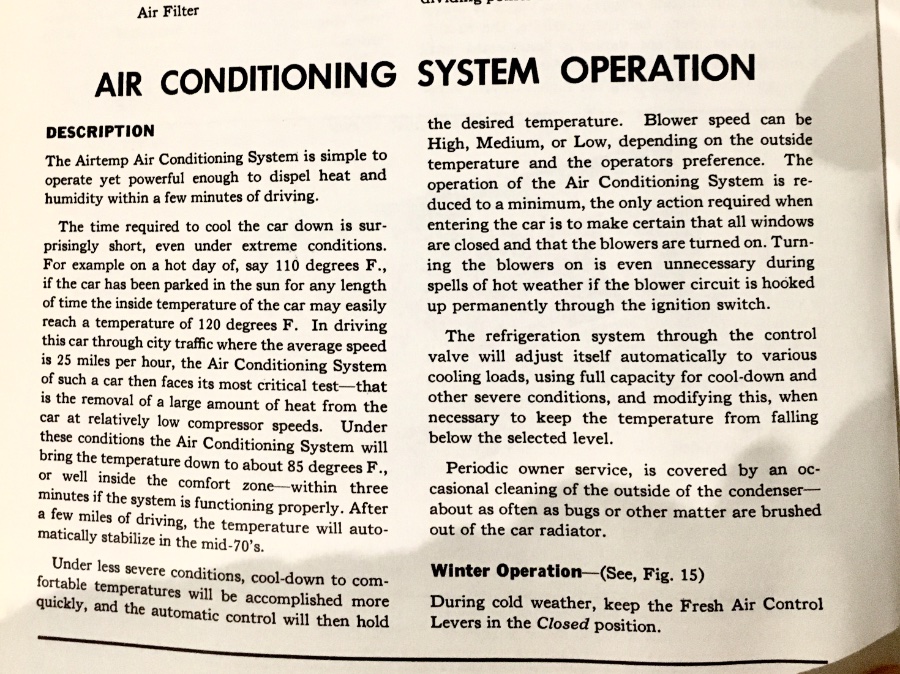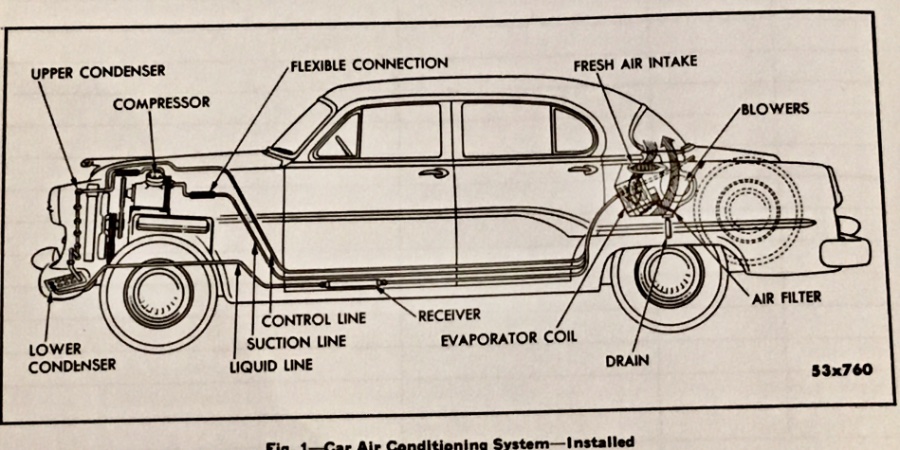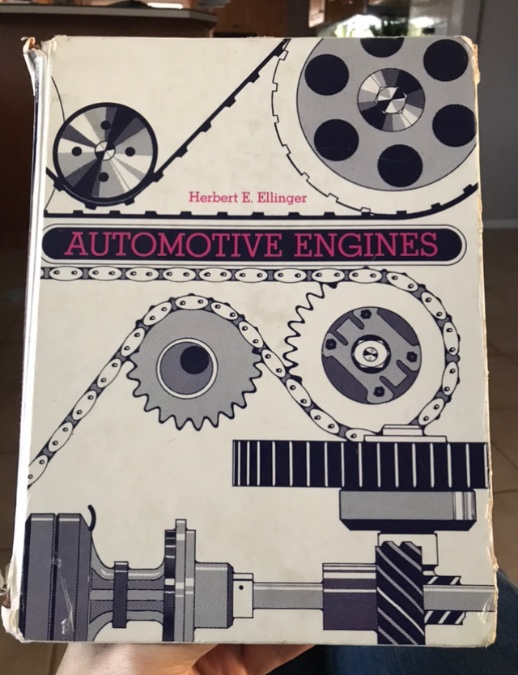-
Posts
3,468 -
Joined
-
Last visited
-
Days Won
193
Everything posted by keithb7
-
An easy check when it's hot and won't start: Remove the engine air filter. Look down the carb venturi. Cycle the throttle linkage a couple times. Look for raw fuel squirting into the carb throat. The accelerator pump squirts it in there, when it's working right, and when there is fuel in the carb bowl. If there is no fuel in the carb bowl, is it evaporating? Could be. Why is there no liquid fuel being pumped back into the carb bowl? Vapor lock could be an issue. Remove the fuel line where it enters into the carb. Hold it into a bucket or bottle. Have a friend crank the engine over to activate the mechanical fuel pump. Is there liquid fuel pumping out of the fuel line? If not, you seem to have a fuel delivery problem. Let the car totally cool down and try this test again. Maybe let it sit overnight. In the morning, now is there liquid fuel pumping out of the fuel line, while cranking the engine over? If yes, you likely have vapor lock issues. Try non-ethanol fuel. Is your heat riser valve in the exhaust manifold stuck open? Overheating the carb? Check it out. If you do have good fuel delivery, & good compression (when hot) , good chance its something in the ignition system. I like to use my own screw-ups as examples to help others. One time I set my engine tappets incorrectly. I was learning. Boy did the engine run quiet and smooth! I was proud. Then everything heated up. Valve stems elongated. Valve lash decreased. Hmm, the noise out the exhaust sounds off. "Something is awry" I thought. By now I had poor cylinder compression and my hot engine would not start. The exhaust valves were not seating properly. When I let everything cool down, the valve stems shrunk again. No problem. The engine fired right up. I re-set the valves properly. Licked my wounds, checked my pride, and we were all better off.
-
Fluke are probably among the best out there, however for a home hack mechanic working on an old Mopar, you’d do fine spending a lot less. I’ve had an Amprobe AM-240 for 15+ years. Can’t complain. Works great. Something else to think about is a multi-meter with a clamp type ammeter. Nice for measuring generator or alternator output. I bought a Uni-T model UT210D. Amazon or e-bay, I can’t remeber which. It works well, however I’ve only owned it about a year. Seems like a fairly decent quality built meter.
-
-
That could be a great project for you and your kid. If he/she is showing interest in getting the old car running and driving, it may be time to build some memories. These are easy to work on and parts are readily available. You should be able to find a used exhaust manifold. Gasket kit not an issue. Set the valves while you are in there and clean out the carb. Install new carb gaskets. Maybe some ignition parts and she’d likely run smooth again. Next thing you know “the kid” is driving it to school. Filling the car up with buddies, heading to McDonald’s for lunch.
-
Cool little car. Congrats. You found the right place to come and hang out. We’re all pretty infatuated with these old Mopars.
-
Oh man your event sounds fantastic. Would sure love to attend. A few complications for me. 1. I don’t own a Mopar truck. 2. Our country’s shared border remains closed. Best of luck with your event.
-
Good to see a great car, out every month of the year. In Canada. Unseasonably warm here too. Felt like May today. Sun shining. T-shirt weather. We hit 15C today. Planning to take mine out this weekend.
-
I wish...Born too late I guess. By the time I was 16 and buying gas, it was all selfserve in my area. The mom & pop gas station was pretty well gone by my time (1987). I’m enjoying the early job stories here so I’ll share too. I think I began a paper route at at 10-11 yrs old. Pops encouraged me (actually more like a threat) to work and earn my own money. I remember it was an early morning paper route. I’d set my alarm for 5AM. Rip up the road on my bike. There was a wooden bin box up the road where I grabbed my bundle of papers for my subscribers. I timed my self each day, working my route. I worked and found efficient ways to get papers delivered in record time. 6 days a week. I recall getting back home 25-27 mins later. Sweating pretty good. I’d strip down and hit the sack again. Heart pounding. I could fall asleep again in seconds. Then wake up for school at about 7am. Lots of memories out there killin’ it in the dark on my bike. Pedaling like a maniac trying to better my record time. I went on to picking vegetables by hand at a local farm. Then finally I was legal to work at 14. Took my first formal job at McDonald’s flipping burgers for $3.65/hr. Worked like a bugger all through high school to keep my crappy cars on the road. Weekends and evening shifts were needed when dating hot chicks! Lol. I was busy. My grades suffered. To this day I still can’t turn away an opportunity to make a buck. Silly jobs that I don’t need. We make a good living, my wife and I. Yet I can still be found plowing a neighborhood driveway with my ATV for $30. Or some other simple task for cash. Silly me, I can’t help myself. Work ethic was ground into me. Thanks Dad. My wife shakes her head at me sometimes for sure.
-

Coolant Temperature Probe Ports Across The Years
keithb7 replied to keithb7's topic in P15-D24 Forum
-

Coolant Temperature Probe Ports Across The Years
keithb7 replied to keithb7's topic in P15-D24 Forum
Following-up to close out this thread. Thank you to a couple of outstanding members here who “pay it forward” I secured the proper gland nut. Tonight I took my head to my local friend’s garage. He used his machinery to drill and tap the probe hole to ½” NPT. Now we should have a properly functioning bourdon tube system from 1938, in my 1954 engine. I too shall pay it forward when the opportunity arises. Thanks. -
Great news. Glad you were able to solve it completely, and quickly.
-
I was trying to tear down a frozen engine last year. I finally got the piston rings freed up. Pistons and rods out the top. Crank still would not bar over with a 32" long breaker bar. Then I got to the valve train, as it was still frozen and not allowing the crank to turn. Guess that point I could have removed the timing chain to see if crank would turn. You can't remove the camshaft until the valve lifters are out. Cannot get lifters out until valves are out. What a bear of a job that was, to try and teardown rusty valves that were frozen. I reassessed the situation and stopped. I took the whole lot of it to the scrap yard. My goal was the learn all about the internal workings of the Mopar flathead 6. I accomplished that. The block had been sitting partially disassembled since about the early 70's. Frozen valves, with the tools and methods I used...Not fun. I found another pile of scrap Mopar parts including another 1949 218 engine for a heck of a price. I tore it down happily and easily.
-
Things can happen unknown to us, causing bad symptoms that leave us scratching our heads. Try and erase all you have done, and start over like you have no knowledge of the work you did. Start fresh and begin trouble shooting. The recent work you have done is likely influencing and limiting your troubleshooting to solve this. Here is an example: I had a decent running engine. I took out the spark plugs to gap and clean them. Put them back in. All plug wires were labeled upon disassembly and put back in proper order. Car would not run right. Very hard starting. Misfiring bad. Would not idle. What the heck did I do? It was a simple task. I started tearing in and checking things. Ignition system, fuel, you name it. I was scratching my head like you are now. I was running out of things to check strictly related to the work I had just done. I was flustered. Finally I broke down and started over with a compression test. I found a couple of low psi cylinders, and 1 was completely dead. I took the head off and found a bent valve. WTH? Why? I dug around a bit with a flash light and a mirror and found the remains of a small hex screw. 1 piece was in the cylinder, another in the exhaust port. The screw sure looked like one that would mount a voltage regulator to the firewall. Which happened to have 1 of the 4 mounting screws missing. The car was new to me at the time. I had only owned it for about 3 weeks. The previous owner had probably dropped a screw and never found it. Seems that it landed down in the well of the sparkplug mounting hole in the cylinder head. Where it sat, until I lifted the plug out. Into the combustion chamber it dropped. Unknown to me, I had put the sparkplug back in and started the engine. A bent valve was the result. I learned a couple of good lessons from my example: 1. Be diligent in using compressed air around the spark plug base to clean out any dirt or other foreign objects 2. Asking questions on the internet will get you tons of different answers, leading you down various paths. Getting the right answer from someone, is like winning the lottery. Kind folks offering assistance are blind to what you are seeing there at the car, throwing out ideas to check. Also their responses are influenced by their personal experiences. 3. Open your mind to any and all options when troubleshooting. Don't zone in on the work you did. Old cars have about 1 million things that can go wrong and compound. 4. Study automotive theory. Read lots about it. Then lots more. A deep understanding of all automotive systems will improve your troubleshooting skills immensely. 5. I leaned how to do a valve grind by hand. Lol. That was the biggest lesson. My problem is likely not your situation at all. I used it as just an example how things can unfold with car maintenance sometimes. To maybe guide you to remove the blinders you may have on, due to the work you just did. Good luck. Keep at it and report back. We can help guide you. Just because we all like photos....Here was my eureka moment when I pulled the head. Doah!
-
I’m doubting the exhaust flapper valve has much to do with the rpm complaints. However we are blind here, can’t see whats going on. My exhaust flapper valve is wired shut on one of my cars. It doesn’t seem to cause me any issues. I don’t drive it in winter months though. You’ve certainly got an interesting combination of symptoms going on. Maybe more than 1 thing is acting up. I’m thinking fuel related somehow. Yet carb swapping never fixed it. Back firing thru the carb? High idle. Wont run. Hmm. Wish I was there to help troubleshoot.
-
If you are interested, here is a pic of the underside of where your carb mounts. Bottom view of the intake manifold. The exhaust gas is deflected up into this cavity area to quickly heat up the carb base. Helping gas vapors stay in suspension.
-
Interesting...The KEW stamped engine was in cars down under. Indeed the engines could have been built at the engine foundry in Windsor, Ontario Canada. My understanding is they only offered the 25" engine there in the in-line 6 engine. Small 218 (218.06 ci), up t0 265 (264.5 ci) engines were offered by mixing and matching various throw cranks and bore sizes. I believe bores were either 3 ⅜ or 3 7/16 only, in the 6 cylinder. The 250 you mention in your Dodge , is this the one many folks refer to as the 251 that was the Chrysler engine? Spec'd at 250.6 ci, 3 7/16" bore x 4 ½" stroke? Have you measured your stroke? The pipe plug atop #6 cylinder, in the head allows easy stroke measurement. I am not sure if the 38 Dodge ever had that engine when new. Sorry I can offer much info. I am interested in learning more.
-
Herb really gets into the meat. Pretty deep. I quite like his writing and delivery. This new found book and knowledge, should really help my trouble shooting skills overall.
-
I feel compelled to come back and declare new further research, and depth of understanding. An old book from 1942 era helped me understand fuel droplets and condensation at cold engine temperatures. Today I happened upon a used bookstore in a town outside my home region. I enjoy seeking out old automotive technical books. This book seen below was published in 1972. A lot of further research and development occurred since 1942. The section I just read on intake manifolds, manifold heat, and fuel delivery was fantastic. I won’t go on to bore you with too many more details. However, I learned that the ability for droplets of fuel to stay suspended in the intake air is not only effected by air temperature, but also air velocity. The slow moving intake air /fuel mixture at idle can tend to allow fuel droplets to fall out of the air and collect on intake manifold floors and walls. When cranking over to start an engine, the crankshaft and pistons are turning relatively slow. Air is moving slowly thru the carb and intake manifold. Fuel droplets fall out and drop down. The fuel droplets also condense on cold parts (as mentioned in my earlier post). A double whammy as the engine tries to flash up. Add a poorly maintained 6V system and a cold weak battery, the cards truly are stacked against the poor old engine to start. Eventually as the engine and the A/F mixture gets heated up by the engine heat, now we get good efficient delivery to the combustion chamber. Air/Fuel that has condensed and may have collected at manifold floors evaporates now too. It takes flight now, and finally arrives at the combustion chamber efficiently. My goodness, good stuff! Worth the $5 alone I paid for the book. If you seek earlier automotive technical learnings, this book delivers. Sorry if I interrupted this thread. -K
-
I ordered and installed brand new bias black walls on my '38 Plymouth. I figure it was a lower-priced model car, for the average working Joe or Jolene. Who buys the cheaper car in 1938 and puts white walls on it? That's just my opinion. I went with Coker. Bought them from Summit Racing web site. Free freight. Coker was charging a premium for freight. For my 1953 Chrysler, I bought brand new Coker Radial, wide-white walls. Expensive? Ya, sorta I guess. But the old car deserves it. The Chrysler was a premium product. Good chance I figure that back in '53 folks might have been more inclined to buy white walls and fancy chrome spoked rims. The difference? The radials float along and offer a cushioned, track-free ride. However my big old Chrysler does not have power steering. The bulge in a radial tire makes it harder to steer in low speed applications. Like pulling into a parking spot. Or parallel parking. The bias are firm and do not flex. Low speed, strong arm steering wheel manipulation is easier. However the bias tires do want to follows ruts, cracks in the road. Sorta like they have ADD. Ya gotta be ready with the steering wheel at all times. I read that putting radials (they bulge and flex) on original rims designed for bias tires, can cause pre-mature failures of the old rims. Cracking can develop from all the tire flexing. Transferring additional stresses onto the rim. Seems believable to me. I run tubes inside both types of tires. I am fortunate to own 2 cars and 2 tire options. Spoiled. Preference today? For me personally it makes no difference to me. Both tires have good and bad points. I just can't imagine putting wide white wall radial tires on my '38. For me it just doesn't work. You do whatever you like and I'm good with that. Just leaving my experience and opinion for you. - K
-
I don't know where the dealer would have installed it, however personally I don't like adding anything to the ignition circuit. I'd tie power into the aux circuit if there is one. So when the key is on then power is sent to a switch, then on to the blower motor. 6V? Will probably need about a 7A fuse. I'd add one.






